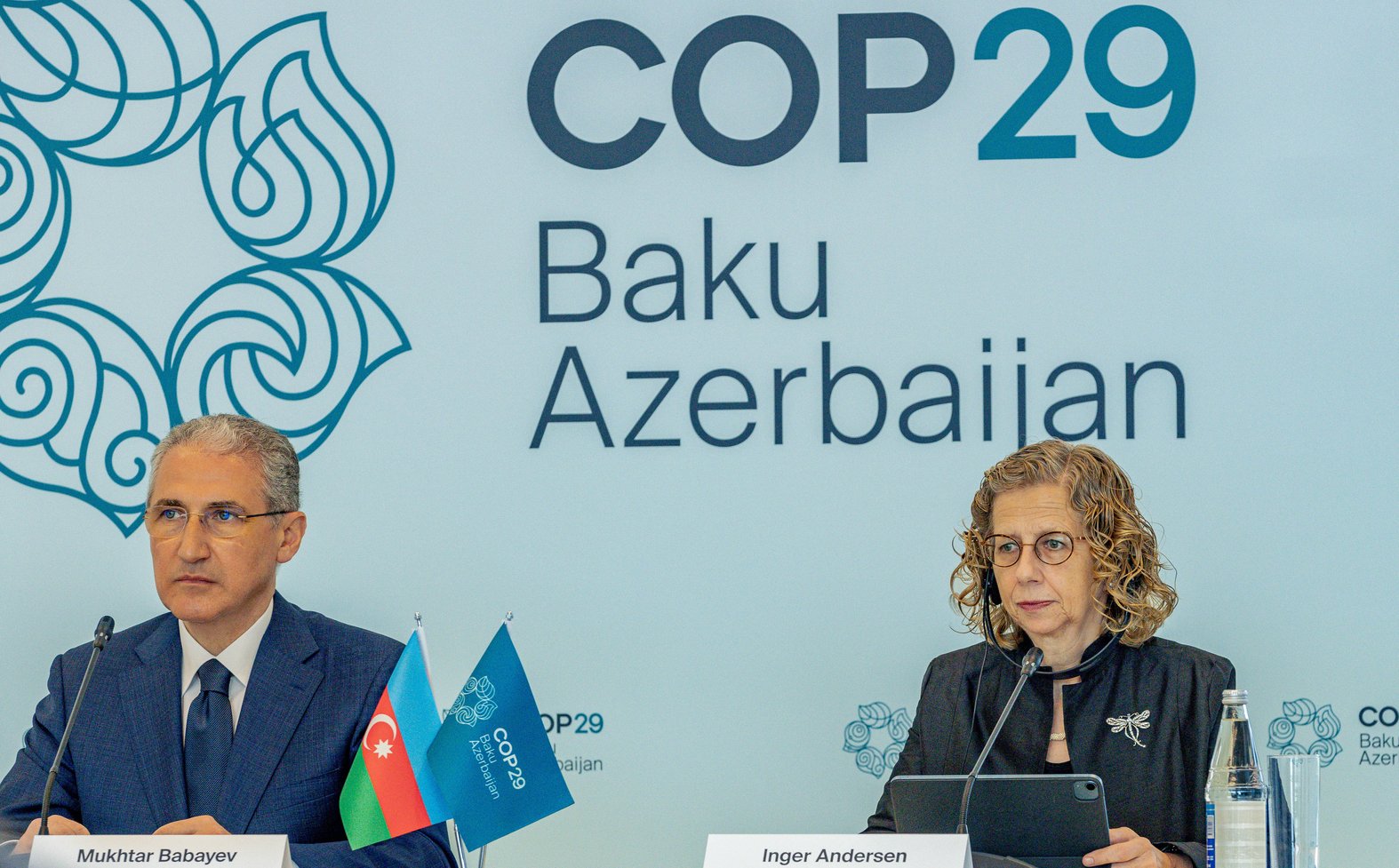
This story was supported by the Pulitzer Center.
Opening day of COP29 in Baku, Azerbaijan got off to a contentious start. Rules for the new UN carbon market (here and here) were approved without a discussion among countries as to what exactly the new rules are and whether they contain loopholes that could undermine the point of the mechanism: reducing carbon emissions.
Typically, such important matters are negotiated at length, sometimes stretching beyond scheduled COP days. Incidentally, no agreement was reached on these same rules at COP28 when negotiations on carbon market rules ended in a deadlock. But they got a very different treatment this time around: COP29 leadership bypassed governmental scrutiny and undermined international negotiation processes by doing away with inter-governmental discussions and debates.
The Azerbaijani presidency touted the swift adoption of the decision as an enabler of climate action that will “help direct resources to the developing world” while Tuvalu noted its discomfort at the plenary on opening day (November 11th). They said the adoption of decisions at the very start of COP29 without prior consultation with governments sets a bad precedent and is not in line with the party-driven processes mandated under the UN. “We are very uncomfortable with this trend. And we sincerely hope that this trend does not continue.”
The rules that were approved were framed by a UN Supervisory Body composed of twelve people. The Supervisory Body is in charge of overseeing carbon markets under Article 6.4 of the Paris Agreement which allows both countries and companies to trade in carbon credits.
While the Paris Agreement was signed in 2015, key rules and standards to operationalize the UN-governed global carbon market proposed within it had remained stalled. The COP29 presidency presented these rules for governments to rubber stamp without formal debate in the opening plenary of the negotiations, even though they were hardly different from documents that governments rejected just last year at COP28, when many countries, including the European Union and Coalition for Rainforest Nations (CfRN) and Independent Association of Latin America and the Caribbean (AILAC)—coalitions of forest-dense nations that will be deeply impacted by badly governed carbon markets—called proposed rules for the global carbon market insufficient.
Nevertheless, the COP29 presidency slammed through wording that world governments were to “take note” of the Supervisory Body’s adoption of the rules, creating a dangerous precedent.
On November 13, CfRN began negotiations on carbon markets with a scathing remark that hasty adoption of the rules set a “horrible precedent” to good governance and long standing practice under the UN Framework Convention on Climate Change. They also added that the mandate given to twelve people who are supposed to represent all parties to the Paris Agreement—almost 200 countries—was based on trust that had now been broken.
“Given that the country parties requested recommendations from the Supervisory Body and reviewed and rejected them for two years, these recommendations were significant enough to merit discussion before adoption as standards,” said Trishant Dev, Programme officer, Climate Change, Centre for Science and Environment, New Delhi.
Dev is co-author of a report published last year on the functioning of the voluntary carbon market in India which showed that offset mechanisms neither reduced emissions significantly nor benefited local communities who are often forest-dwelling and in some cases, adversely impacted them. “The UN market mechanism is very important to ensure that community rights are sufficiently addressed and safeguarded, as other markets (like the voluntary carbon market) will take cues from the guidance that the UN comes up with,” he added.
There are two kinds of carbon markets: voluntary markets where companies, governments and non-governmental organizations can buy and sell credits in a decentralized market, and compliance markets which are governed by laws and regulations framed by governments. The new UN-governed global market is a compliance market as is California’s cap-and-trade program.
Myriam Douo, senior campaigner at Oil Change International, said market mechanisms require scrutiny in general and that's particularly true for carbon markets because they have “a track record of failure to deliver the scale, distribution, and quality of funding needed, and incentivize big polluters to game the rules and craft shady schemes to continue business as usual."
"Nothing in the standards put forward by the Supervisory Body would stop that here," Douo added. "High risk technologies like geoengineering where, for example, a country attempts to deploy technologies to improve its ocean territories' storage of carbon aren’t excluded. Robust safeguards for people and nature are missing. Instead, there’s just vague references to 'credible methods'."
As of today, the risks of “ocean alkalinity enhancement” projects like the ones Douo referred to have not been thoroughly assessed. For instance, they could adversely impact marine species. The newly approved rules effectively allow credits from such projects to be traded on a UN-governed system without robust risk assessment.
There’s also nothing to prevent a country from setting up a scheme to sell offsets from carbon capture and storage (CCS) being used for enhanced oil recovery, a process by which compressed carbon is injected underground to extract more oil. "So increasing climate pollution," Douo said. "That’s not a small risk because 79 percent of current CCS operating capacity is used for enhanced oil recovery to produce more fossil fuels. This is a gift to big oil, and to the countries that enable it. It was a bad process and a worse outcome.”
The COP29 presidency team has not yet responded to our request for comment about criticisms of the rules and the manner in which they were rushed through. This story will be updated if and when we receive a response.
Durability of carbon removals
Effective carbon dioxide removal requires the removed carbon to be stored durably. One of the issues with the rules approved at COP29 is that it does not provide a science-based definition of durability; in other words, does durability mean a few decades or centuries or millennia?
A new paper published in Nature this week sets the mark at 1,000 years stating “our findings suggest that a CO2 storage period of less than 1,000 years is insufficient for neutralizing remaining fossil CO2 emissions under net zero emissions.”
“The paper is right to highlight the unhelpful vagueness of much of the discussion on the 'permanence' or 'durability' of storage of removed carbon," said Jonathan Crook, policy expert on global carbon markets at Carbon Market Watch.
"It makes it abundantly clear that potentially short-term and vulnerable storage of carbon in soils and vegetation cannot compensate in any way for continued fossil emissions.”
Much of the credits generated today from carbon removal activities like tree-planting do not require high durability standards. And the Land Gap report too shows that country plans over-rely on land-based carbon removals without adequate emphasis on how such removals will be delivered. More specifically, it says tree-planting (both afforestation and reforestation) accounts for about 50% of land-based carbon removal pledges by countries, which in turn could be in conflict with other goals like food security, ecosystem resilience, and the rights of local communities.
The carbon market guidelines are not yet entirely set in stone. Country parties do still have the mandate to provide the Article 6.4 Supervisory Body some additional guidance on crediting standards during negotiations at COP29. “It is essential for them to request the Supervisory Body to define durability in alignment with science, including peer-reviewed papers such as this one,” Crook said.


